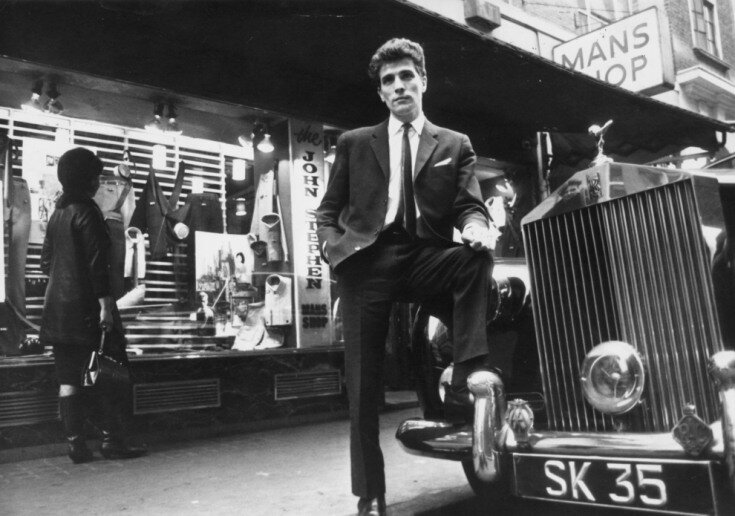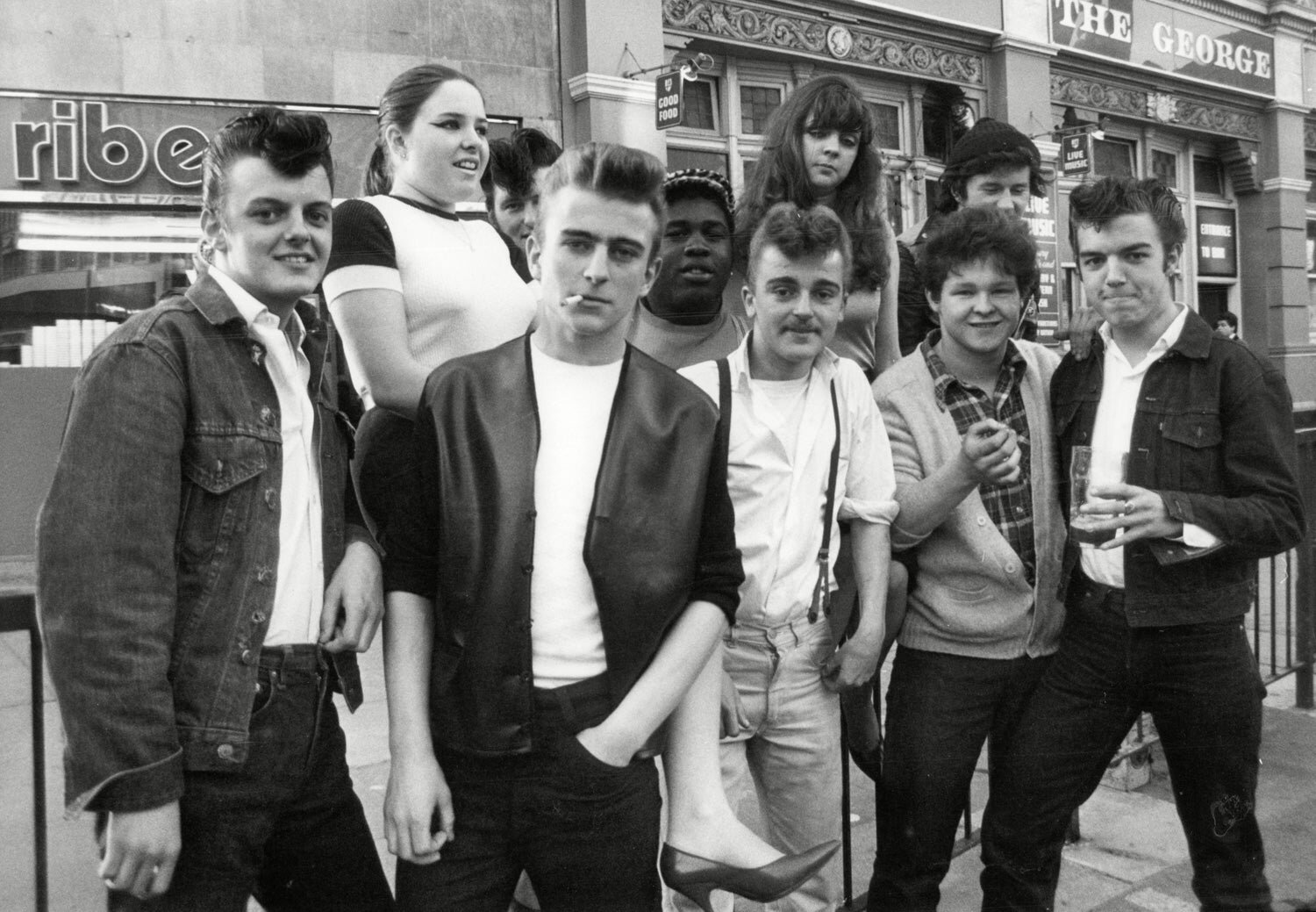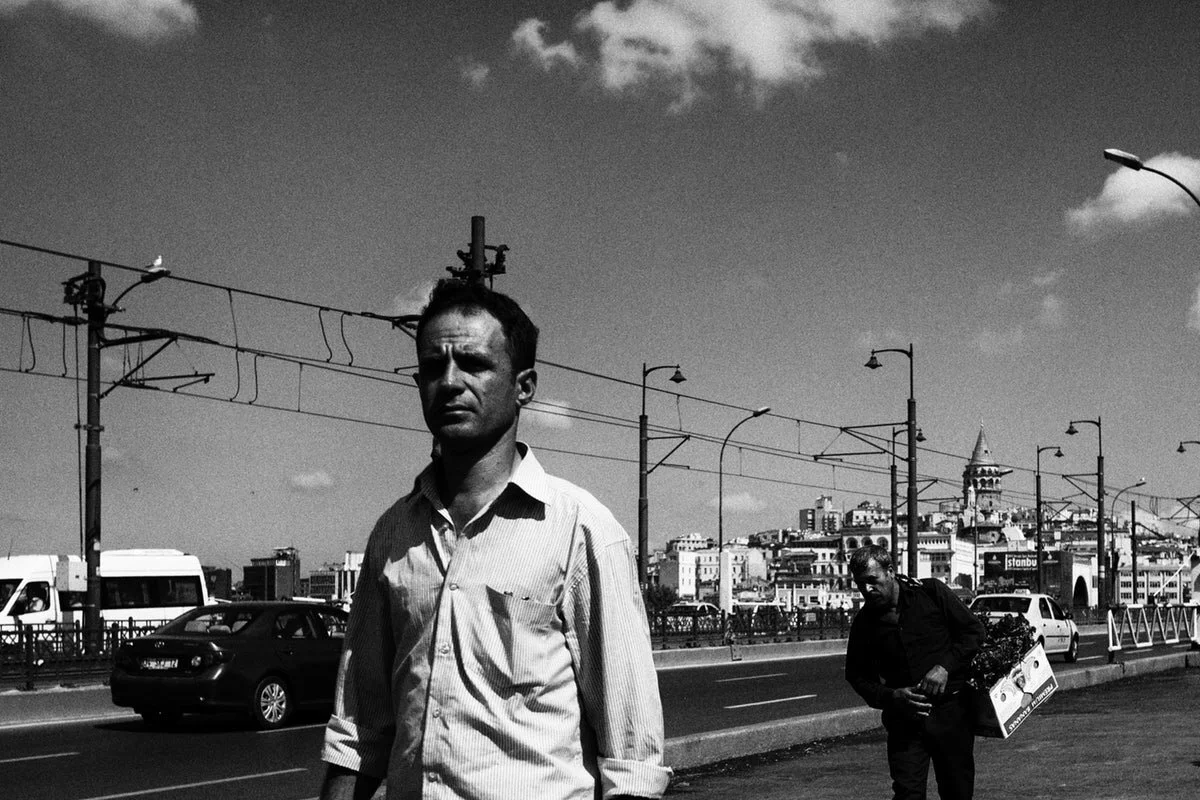1950’s in Britain: Savile Row, Carnaby Street and the Death of the Teddy Boys
Towards the end of the 1950s there was a new fanciful ancillary to the dominance of Savile Row.
A gentleman by the name of Bill Green had opened Vince Man’s Shop on Carnaby Street, introducing an alternative to traditional menswear for the disenchanted youth who, for the first time since wartime austerity, found themselves with disposable income for clothing.
Inspired by some of the current casual trends he had seen during his time in France, he introduced black jeans and shirts to the mainstream, a break from the norm of blue denim.
By the early 1960s he had used bodybuilders to spearhead his advertising campaigns, including Sean Connery. Connery was no novice to modelling by this point. He had previous experience modelling slacks and sweaters in the classified pages of Films and Filming.
Green wasn’t the only one to lift ideas from the Parisian scene. Marks & Spencer, who at that time only sold products that were 100% manufactured in the UK, were also looking to Paris for inspiration regarding its designs.
Whilst the older generations wore white shirts for work, and grey flannels with blazers or sports jackets for weekends, teenagers were looking for floral print shirts, elephant-cord low slung trousers and androgynous flared velvet double-breasted jackets.
Teenagers no longer wanted to dress like their fathers did, and the wheels of the sartorial revolution were already set in motion. In 1957 Donis had opened in Carnaby Street, making slacks in tweed, mohair, colourful shirts at accessible prices.
However, the year was undeniably underscored when John Stephen, an understudy at Vince Man’s Shop, set up his first shop His Clothes at No 5 Carnaby Street.
Stephen hired designers and machinists his own age to manufacture clothes at the back of his shop. This vertical approach allowed fluidity and versatility to cope with the vicissitudes of current trends.
He channeled the music of his time, influenced by the Italian based suits based on the continental cut, sharp thin lapels, narrow ties, shoes, brightly coloured (bilious shirts and exotic fabrics).
In his obituary in the Telegraph:
At the back of his boutique he began to create flamboyant but affordable designs.
He always had a knack for spotting new trends; in the late 1950s he imported the first Levi jeans to Britain. Although they cost five guineas and had to be shrunk to fit, they proved a lasting success and on his 20th birthday Stephen was able to buy himself the first of many Rolls-Royces.
For years he was stopped by the police and asked if the vehicle belonged to his father.
The late ‘50s had a dividing rod that was splintering the solvent youth market: The Beatniks and Teddy Boys.
The Beatnik generation was an American movement inspired by the beat generation, and their style consisted of shapeless jumpers, polo necked sweaters, duffle coats, long scarfs and sandals.
The Teddy Boys was a style loosely based on the Edwardian British Class, with long colourful drape jackets, drainpipe trousers and crepe-soled shoes known as ‘brothel creepers’.
Towards the end of the decade Italian fashion was becoming a huge player in the form of chunky sweaters and slacks.
It was modernist, it was free, it was expressionist, but the old guard bristled at the colourful language employed by the trailblazers of the changing times. The likes of Jack Kerouac and Jerry Lee Lewis were the new pioneers.
London fashion Boutiques became ubiquitous along Carnaby Street and King’s Road. Designers turned entrepreneurs, spurned from the belly of the fashion programme at Central Saint Martins, the same college that would later give prominence to Alexander McQueen.
However, whilst new fads and foppish modernist waves were about to swamp the British shores, the textile industry was suffering due to the introduction of automation.
Quite simply, it was beginning to feel like Judgment Day for the textiles industry despite the boom, hence the tub-thumping rhetoric of Prime Minister Harold Macmillan, ‘people had never had it so good’.
Little did he know that the late ‘50s was still a twinkle in the eye of ‘60s hedonism. Archaic traditions such as sex before marriage might have been on the wane but was not yet the norm and The Beatles were still in Hamburg thinking of ways to kick out Pete Best.
Cinemas also were also suffering with the advent of television, giving the British public an ancillary for late night escapism. In the next chapter we’ll take a closer look at Hollywood glamour and the style icons of an era soon to be eclipsed by the swinging sixties.






